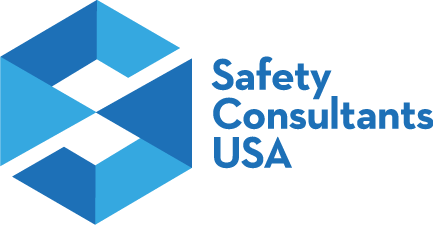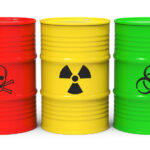Personal Protective Equipment (PPE) is a critical final barrier between workers and potentially life-threatening hazards. PPE works. It saves lives. It saves eyes, hands, and fingers. Understanding the vital role of PPE in your safety program isn’t just about compliance—it’s about ensuring every worker goes home safely at the end of each day.
Where PPE Fits in Your Safety Strategy
PPE represents your last line of defense in the hierarchy of controls after elimination, substitution, engineering, and administrative controls. While engineering controls and administrative measures form the foundation of workplace safety, PPE serves as the final protective barrier when other controls aren’t sufficient or feasible. This positioning makes proper selection, training, and usage critical.
The Foundation: Proper Risk Assessment
Effective PPE programs begin with comprehensive risk assessments. Safety professionals recommend conducting thorough evaluations of your workplace that include:
- Facility and job site analysis examining tools, equipment, and specific manufacturer requirements
- OSHA compliance review ensures that you meet all regulatory requirements
- Regular updates beyond the minimum annual requirement—quarterly assessments are recommended
- Incident-triggered reviews whenever major accidents, near misses, or operational changes occur
The key is not just conducting these assessments but keeping them current. Most people only do them annually. Some will do them quarterly, and most of the time, nothing gets done unless there’s a significant accident or incident.
Building a Culture of Compliance
Successfully implementing PPE programs requires more than just handing out equipment. A strong program comes from creating a genuine safety culture. Such a program involves several critical elements, including these:
Leadership by Example
Management must demonstrate an unwavering commitment to the proper use of PPE. You have to lead by example. If a piece of personal protective equipment is required on your job site, management must also wear it. How do you expect your employees and workers to wear the proper PPE when you walk out to the job site and you don’t have yours on?
Effective Communication Strategies
- Daily toolbox talks covering various safety topics, including PPE
- Weekly comprehensive meetings for general contractors
- Open communication environments where employees feel comfortable raising safety concerns
- Strategic signage is particularly effective in manufacturing environments
Training and Enforcement
Establishing strong policies is meaningless without consistent enforcement and comprehensive training that ensures employees understand not only what to wear but also how to use and maintain their protective equipment properly.
Three Common PPE Selection Mistakes
One of the most frequent and costly errors organizations make is selecting improper PPE. Improper selection isn’t simply buying the wrong hard hat. Poor choices frequently extend to:
- Advanced Glove Technology – Modern glove technology has evolved dramatically, offering different cut levels and specialized protection. Workers handling metal or lumber with splinters need cut-resistant gloves, not basic cotton gloves that provide no protection.
- Chemical Protection – Proper chemical PPE selection requires consulting Safety Data Sheets (SDS), particularly Section 8, which outlines the required PPE. Using the wrong gloves with industrial solvents can result in skin irritation or more severe consequences. Rubber gloves may be necessary instead of leather for specific chemicals.
- Respiratory Protection – The complexity of respiratory protection demands understanding different environments and corresponding filter requirements. From N95 dust masks for silica protection to specialized cartridges for painting operations, proper selection is crucial for safety.
Two PPE Documentation Challenges
Proper documentation represents a significant compliance challenge, particularly for equipment with limited useful life:
- Fall Protection Equipment – Harnesses and fall protection gear require meticulous record-keeping. Every piece has a manufacturer-specified useful life (typically 5-8 years from first use, not manufacture date). Failure to document initial inspections can result in the need for expensive equipment replacement and potential safety violations.
- Maintenance Records – All PPE requires proper maintenance documentation, including:
- Regular cleaning protocols (essential for respirators due to bacterial concerns)
- Inspection schedules and findings
- Replacement schedules based on manufacturer recommendations
The Hard Hat Evolution
The construction industry is undergoing significant changes in head protection, with Type II hard hats featuring chin straps gaining acceptance despite initial resistance from veteran workers. While OSHA doesn’t currently mandate these newer designs, safety professionals increasingly recognize their value after investigating accidents where traditional hard hats came off during incidents.
In its “Safety and Health Information Bulletin titled Head Protection: Safety Helmets in the Workplace” (SHIB 3-6-2024), OSHA states:
“Chin straps are recognized as an effective way to keep head protection on when working in awkward positions or when experiencing a slip or fall, and should be considered for use with all head protection.”
New Standards and Emerging Technology
We continually monitor changes to OSHA standards to keep our clients informed and compliant with the latest regulations. Our safety professionals regularly attend demonstrations to stay informed about technological advances. Here are just two examples of recent PPE changes:
Improved Fit Standards
Construction employers must now provide properly fitted PPE to workers under a new OSHA rule that took effect January 13, 2025. The regulation applies across all personal protective equipment used in construction and focuses on delivering more effective protection and improved worker comfort. As the construction industry must now address the need for properly fitting PPE for diverse workforces, including women and workers of different body types, traditional one-size-fits-all approaches are giving way to a broader selection of PPE that fits properly and functions effectively.
AI-Powered Monitoring
Camera systems equipped with artificial intelligence capabilities can now detect when workers fail to wear required personal protective equipment (PPE), alerting supervisors in real-time. While not perfect, this technology offers promising assistance for supervisors managing large crews.
Industry-Specific Challenges
Construction vs. Manufacturing/General Industry
Both sectors face similar compliance challenges, with approximately 85% of PPE violations attributed to human behavior rather than a lack of training. The implementation of 100% PPE requirements on most job sites helps eliminate the human factor in decision-making.
Behavioral Observations
Effective safety programs include behavior-based observations that address PPE non-compliance through education rather than punishment. Understanding whether violations stem from behavioral choices or training gaps allows for targeted interventions.
Making PPE Work
Despite common complaints about comfort and convenience, modern PPE has evolved significantly from its early designs. The most significant barrier to the practical use of PPE often comes down to cost-cutting. When employers provide only the cheapest compliant options rather than investing in comfortable, high-quality equipment, worker acceptance suffers. However, the fundamental message remains clear: use your personal protective equipment (PPE).
Key Takeaways for Safety Success
- Treat PPE as your last line of defense—critical when other controls fall short
- Conduct regular risk assessments—quarterly minimum, with incident-triggered updates
- Lead by example—management must demonstrate an unwavering commitment
- Invest in proper selection—consult the manufacturer’s requirements and safety data sheets; ensure all workers have access to properly fitting personal protective equipment (PPE).
- Maintain comprehensive documentation, especially for equipment with a limited useful life
- Create a safety culture—where safety becomes as natural as breathing
- Embrace technological improvements—from ergonomic designs to AI monitoring systems
PPE isn’t just about regulatory compliance. A PPE program ensures that safety becomes so ingrained in your workplace culture that workers naturally protect themselves and their colleagues. As the industry continues to evolve with new technologies and changing demographics, the fundamental principle remains unchanged: proper PPE selection, training, and usage save lives.
When implemented correctly with strong leadership support, comprehensive training, and a genuine commitment to worker safety, PPE programs don’t just meet regulatory requirements—they create workplaces where everyone goes home safely every day.





